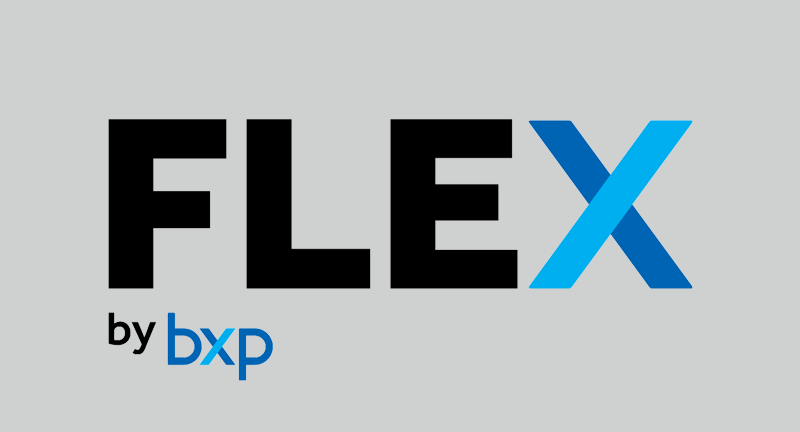A few weeks ago, the LeasePilot team moved our operations to Boston Properties’ FLEX space on the 29th floor of the Prudential Tower in Boston. As real estate people, we’re thrilled with the Flex concept and see it as an important new direction for the future of office leasing. In short, FLEX strikes a balance between the high-touch, all-inclusive experience of coworking spaces like WeWork, and the traditional hands-off office lease.
We sat down with Bryan Koop, Boston Properties’ Executive Vice President, to talk about what FLEX is, the market changes that led to the initiative, and why it’s poised to become an important segment of the company’s asset mix.
The interview covers a lot of ground, so we’ve split it into two parts. You can view Pt. 2 here.
Q: For the uninitiated, what is FLEX by BXP?
FLEX by BXP is a workspace where the name is a reflection of all the benefits and attributes that we’ve determined that the customer wants. It’s flexible in its term; we’ll do a few months or we’ll do a couple of years. You can configure your space any way you want it. If you want to hang a sign, hang a sign. If you want to hang a giant model airplane from the ceiling, you can hang a giant model airplane from the ceiling. We really believe that our customers should be able to use the space as they see fit.
It’s also flexible in terms of how you can grow as a company. So if you have 2,000 square feet and you need another thousand, we can take down a couple partitions and you can expand the space. Or you can move down the hallway to a larger space without re-negotiating the lease or worrying about sub-leasing your old space. We want to make it as easy as possible for the user, thus the name FLEX.
We found we had an ‘invisible’ client already in our buildings that we were not exposed to.
Q: What kind of company is an “ideal” or archetypical tenant for FLEX?
We’re already finding that FLEX is resonating with the tech community because, as you guys at LeasePilot already know, things move extremely quickly. Companies see explosive growth, they get acquired by larger companies, they merge with other companies, etc. Tech is, by nature, a more nimble industry with growth cycles that are much shorter than what you see in other, more traditional industries.
So that’s what we’re finding: the two zones have been tech, and then existing clients who have short term needs. We’re also seeing our existing customers who have longer-term leases in traditional office space—the “long and strong” sector as we call it—that say to us, “Hey, we’ve got a new project or product line we’re rolling out and we want to keep it separate from the main organization, but close enough that we can work with the team on a daily basis. Can you get us space for six months to a year?”
Q: Where is Flex space available?
Right now the 29th floor of the Prudential Center is the first space we’ve dedicated to FLEX. But we’re already far along in the planning stages for a few other properties in the Boston area, including the planning and design phase of adding FLEX space to The Hub on Causeway, which is the project next to the TD Garden.
In suburban areas, we’re approaching FLEX a little bit differently. We’ve got small spaces in the suburbs—one and two thousand square feet that are between gaps in our suburban buildings—where my team is saying, “Hey, can we do what we’re doing [on the 29th floor of the Pru] in this individual space?” and I say, “Why not?”
Q: How long have FLEX plans been in the works? What factors—market or otherwise—did you consider before making the informed decision to move forward with the idea?
We’ve been looking at it seriously for probably three years. And in the last two years since they’ve zoned it we’ve been able to put a laser focus on planning and designing FLEX space on the 29th floor of the Pru.
Sure, we could throw a party every once in a while, but we decided that’s not a major selling point for a FLEX client. They don’t need us to entertain them, they don’t need us to build their culture. They just need great space and place.
As far as the market research we did, one of the things that we found really intriguing was that in the Boston region—where we have about 14 million square feet of office space—there are over 110 subleases where our existing clients are subleasing space to somebody else. So we took a look at how large those subleases were and what the terms were, and we found some eye-opening data. One of the most important takeaways was that a sizable percentage of those subleases—I think it was actually 37 percent—had terms of less than two years.
The other important takeaway from this research was that most of these subleases were between three and five thousand square feet. So basically we found we had an ‘invisible’ client already in our buildings that we were not exposed to. This gave us the hard data we needed to prove that there was a significant number of this type of client.
Q: Despite the data-backed evidence, FLEX is still a new and unproven direction for Boston Properties. Was there any internal resistance or challenges that had to be overcome to get the green light?
There really wasn’t. Boston Properties has been around for a long time, and one of the reasons for that is our adaptive capacity to change with the market. We’re always asking, “How do we innovate? How do we design space better? How do we stay focused on our customers’ needs?” And as we interviewed more and more of our customers we continued to see this need for flexibility and agility. That feedback combined with the hard data we gathered and our drive to adapt made FLEX an easy sell internally.
Q: What other challenges did you face during the planning phases of FLEX?
The primary challenge was defining the scope of what FLEX should offer. Imagine a linear diagram and at one end you have the ‘long and strong’ leases—200,000 feet with Google, 200,000 feet with Ropes & Gray, 400,000 feet with Bank of America—where the customer plans the build-out, buys the furniture, etc. On the other extreme you have the month-to-month coworking leases that offer what is essentially a turnkey experience that includes not only a furnished work space, but also a built-in workplace culture. Networking opportunities, guest speakers, and other culture-building events are a huge value-add for startups that are too small to develop a culture of their own.
We determined that, as a company we’re not structured to provide the high touch, always-on work space that you’d find at a WeWork or other similar coworking space where you’re throwing wine and cheese parties, planning networking events, and essentially handling the administrative business of your client. We felt like that was a skill set that the coworking industry is doing very well. Leading the way, in fact.
As we interviewed more and more of our customers we continued to see this need for flexibility and agility. That feedback combined with the hard data we gathered and our drive to adapt made FLEX an easy sell internally
We think there’s something in between these extremes, and that’s the zone where a company says, “You know we’re mature enough that we really want our own space. We want to build our own culture. We’re capable of doing our own administrative work. We really want the space to be our space, not the coworking brand and culture.”
We’re highly confident that we can deliver that concept and that type of product because that’s not too far away from what we do every day. We make sure that the building’s operating great. We make sure that everything’s clean. We make sure that it’s the best possible space and place. And then, the add-ons for FLEX are a common area kitchen, conference rooms, and other small, incremental add-ons that we’re highly confident we can provide. Sure, we could throw a party every once in a while, but we decided that’s not a major selling point for a FLEX client. They don’t need us to entertain them, they don’t need us to build their culture. They just need great space and place.

